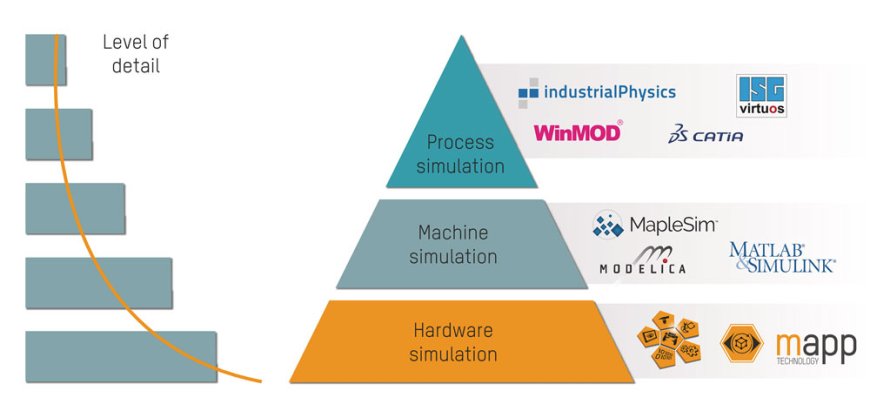DEVISING and IMPLEMENTING TECHNOLOGY for a BETTER FUTURE in CONSTRUCTION INDUSTRY
The construction industry has witnessed a wide range of market variations from abandoning the old traditional systems to getting automated. OEMs of this sector have put a lot of effort and time into evaluating the market developments and understanding the

The construction industry has witnessed a wide range of market variations from abandoning the old traditional systems to getting automated. OEMs of this sector have put a lot of effort and time into evaluating the market developments and understanding the real catalyst to market growth. In a way, these mark an important aspect to stabilize one’s position in the market. But is this enough to increase market value, especially with higher market demands which have increased year after year? The consumer is continuously penetrating in experimenting with newer ways and is ready to invest in this urban development to build a future, one of the gold mines in the construction equipment business. Adapting to technology at right time marks a catalyzer to generate higher revenue and improve its market position with the growing market demands. Technology advancements mitigate many challenges and take you in the sprint ahead.
Go, Innovation High: Rise High
Most of the OEMs are now tech-savvy and understand technology fills up the missing growth gap. OEMs of this industry have shredded the age-old techniques and switched to more disciplined ones. They are continuously innovating themselves and at the same time experimenting with future technology requirements. It has been seen the demands in the market have shifted steadily. With new functions being added all the time and the requirements for efficiency and quality higher than ever, the construction industry is now focused on scalable, high-performance automation solutions. In recent times, automation has found a new boost of innovation, thus implementing automation solutions for construction equipment for various applications is the new attraction in the market. Innovation never fails to increase the fertility of this industry; it eases the processes reducing time and increasing production capability. In short, it works as a catalyst. Digital technology helps you to unite, analyze and manage your engineering data processes and supply chain in an intelligent and efficient way. It also helps you operate with the highest levels of corporate social responsibility.In the construction industry, the IoT can allow construction machinery, equipment, materials, structures, and adding innovation to bring all the scattered data into one central data platform. Other technologies, including sensors and communication devices, can monitor productivity and reliability. Manufacturing to market demand earlier had a huge gap which is now constructively filled up by the OEM giants which in turn are helping the small businesses to grow too. OEMs are investing a major share of their profit in understanding the market demands and constructing new ways to grow, also a major share is in automating their manufacturing and warehouse plants to construction sites so that availability of spares becomes easier. This industry stretches itself to great hurdles, so innovation steadily works smartly in this case. The more it gets adapted to innovation, the more its processes get automated and make the process smooth. OEMs are now investing in data preservation and using it the right way with analysis, automating their work processes in brownfield, understanding the need for better mining automation software or processes are a few examples where the OEMs of this industry have invested heavily and are now enjoying the successes. Rising safety concerns with higher productivity yield w.r.t the products manufactured for brownfield are the main driving factors for higher growth. Looking at the rapid growth in this industry, the prices are soaring high as per various recent market research. Your excavators, backhoe, bulldozer, construction trucks, and other vehicles are now not only mechanically advanced but digitalized too. Construction business is very important in spiking up country’s economy. The construction sector provides about 18 million job opportunities and about 9% of the GDP growth with recently published reports available on the internet. It creates jobs, drives economic growth provides solutions for social, climate, and energy challenges. If we look thoroughly the benefits of achieving autonomous operations are a significant presence in this sector, ranging from improving health and safety in parallel by protecting the product in hazardous environments, improving productivity, reducing costs, and improving levels of certification acceptance for durability and stand still in harsh conditions.
New Possibilities, new trendsin software for CE manufacturers
In a volatile market, you need to ensure your manufacturing operations perform as efficiently as possible. Manufacturers of construction machinery face the challenge of implementing intelligent (semi)autonomous machine functions quickly and maintaining them for long-term usage. The market is flooded with boosts of innovative products and software but choosing the right one to help ease your manufacturing, requires the right set of skills and technology awareness to perform and ease your daily production work. There are a lot of setbacks for this industry like maintaining higher safety requirements, stricter noise regulations, correct data interpretation and utilization, correct engineering practices, innumerable customization demands and variants, growing requirement of spares and rentals, and maintaining strong competition for better productivity. Industries are inclining towards smart manufacturing by adapting to Industry 4.0 techniques. Here, B&R understands the requirement of the OEM and helps them to prepare for various manufacturing challenges. B&R continues to open new possibilities in mobile automation with its innovative software solutions. Automation Studio is your single uniform programming tool for every aspect of an automation project. It strengthens overall integration and eliminates communication problems between engineering disciplines. The model is designed to save time and money by starting software development before the hardware is completed, reusing software modules across multiple projects, validating functionality via simulation, and carrying out commissioning module by module. Construction machines and systems are often operated in remote locations. As a result, service and tasks maintenance are generally dominated by travel expenses. Remote diagnostics and remote maintenance lower the risk, particularly during warranty periods. Whether performing hardware diagnostics, setting values, or utilizing assisted machine operation, the integration of VNC, a Web server, and remote programming provide valuable services for all phases of a machine’s life cycle. B&R’s mapp Technology is revolutionizing the creation of software for industrial machinery and equipment. mapp components are easy to implement rather than writing huge codes to build a user management system, alarm system, or motion control sequence from the ground up, developers of machine software simply configure the ready-made mapp components with a few clicks of the mouse. Complex algorithms are easy to manage. Programmers can focus entirely on the machining process. All these micro-level management can help increase productivity and proper wealth management. Adding to it we all now know, OPC UA forms to be the ideal communication protocol for Industry 4.0. OPC Unified Architecture is a vendor-independent communication protocol for industrial automation applications. It is based on the client-server principle and allows seamless communication from the individual sensors and actuators up to the ERP system or the cloud. The protocol is platform-independent and features built-in safety mechanisms. Since OPC UA is flexible and completely independent, it is regarded as the ideal communication protocol for the implementation of Industry 4.0. It is said that every industry goes through a period of transition to achieve significantly higher outcomes and improve its market value. We can now say looking at this market that it has already overcome the said tenure as the major giants of this industry are soaring high not only with uplifting their value but if we check through their business partners, they have not left any stone unturned.

– Himanshu Sharma
Head-Marketing & Corporate Communication, B&R Industrial Automation
Hits: 3








